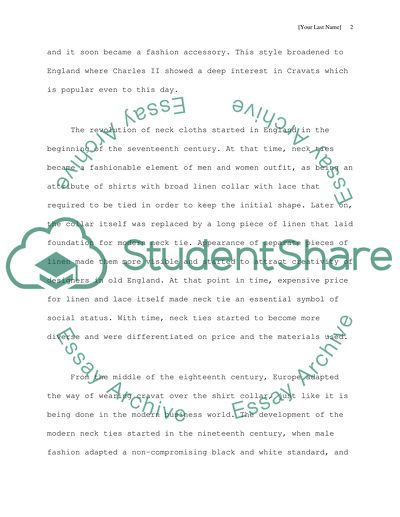Cite this document
(“The History of Ties: How did ties become an essential element of Essay”, n.d.)
Retrieved from https://studentshare.org/family-consumer-science/1417247-the-history-of-ties-how-did-ties-become-an
Retrieved from https://studentshare.org/family-consumer-science/1417247-the-history-of-ties-how-did-ties-become-an
(The History of Ties: How Did Ties Become an Essential Element of Essay)
https://studentshare.org/family-consumer-science/1417247-the-history-of-ties-how-did-ties-become-an.
https://studentshare.org/family-consumer-science/1417247-the-history-of-ties-how-did-ties-become-an.
“The History of Ties: How Did Ties Become an Essential Element of Essay”, n.d. https://studentshare.org/family-consumer-science/1417247-the-history-of-ties-how-did-ties-become-an.


